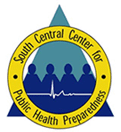
Cross-Border Collaboration
Course Description:
The challenges of disaster and emergency planning and the coordination of response increase significantly when the event spans state lines, borders of sovereign Tribal nations, and international borders. Challenges associated with cross border response range from technical issues such as the compatibility of communications systems to legal issues such as authority and power of responders to the managerial issues of planning, organizing, and controlling the response. In order to deal with these challenges multi-jurisdictional agreements in the forms of Memorandums of Understanding and Mutual Aid Agreements are often created. While such agreements are essential to developing the details of collaboration, testing the effectiveness in terms of both substance and form through drills and exercises is necessary and offers additional benefits of strengthening relationships and building confidence among cross-border response organizations.
Note: This course was originally delivered as a satellite broadcast.
Target Audience
Academic Faculty/Staff, Federal Government Employees, State Government Employees, Local Government Employees, Non-Government Employees and Students
Learning Objectives
- Identify some of the issues that affect cross-border emergency response collaboration
- Identify key elements of Memorandums of Understanding and Mutual Aid Agreements
- Discuss incident command as it applies to cross-border incidents and response
- Explore the efficacy of drills and exercises in evaluating and improving cross-border emergency response
Instructor:

Andrew C. Rucks, MBA, PhD
Dr. Rucks is Associate Professor in the Department of Health Care Organization and Policy at the University of Alabama at Birmingham (UAB), School of Public Health. He has almost 30 years of academic and business experience. Following the receipt of the Ph.D. degree in Management Science from the University of North Texas, he served four years in the US Army participating in strategic decision analysis and the development of large-scale computer simulations. After serving in the military, he held business-school faculty positions at Auburn University, the University of Arkansas, UAB, and Samford University. At Samford University for 10 years, Dr. Rucks managed the university’s computer service department for four years and was Associate Dean of the School of Business for six years. He was the founding director of the Community Banking School at Samford University. Dr. Rucks developed a consulting portfolio of local, regional, and international businesses including BellSouth, AmSouth Bank, The Southern Company, Protective Life Corporation, and a number of small- and middle-market manufacturing and service companies. In 1997, Dr. Rucks left academia to become Chief Operating Officer of Sirco Systems, a medium-sized manufacturer of steel shipping containers with a world-wide market. Following the successful growth and sale of Sirco, Dr. Rucks held operating executive positions in a middle-market conglomerate and later was a private-practice consultant. In 2004, Dr. Rucks joined the School of Public Health at UAB as Associate Professor, where he teaches finance, management, strategic planning, and process analysis, conducts research in public health preparedness for all hazards, and consults in a variety of areas. He is the author of two books, nine computer programming aids, and more than fifty articles and cases. Dr. Rucks holds BS and MBA degrees from Auburn University.
Available Credit
- 2.00 Participation/CETulane Professional and Continuing Education (PaCE) awards 2.00 hour(s) of credit for completing Cross-Border Collaboration
Price
Required Hardware/software
System Settings
This course is designed to work most effectively if your computer and internet connection meet certain minimal requirements. This course can be accessed using a Windows 10 PC or a Mac with High Sierra1, Mojave, or Catalina. Pop-up blockers should be disabled when viewing the course. Internet Explorer 11 (for Windows 10), or the current version of Google Chrome, Mozilla Firefox, or Apple Safari (for Windows 10 and or Mac) is required. Many of our courses require Java and JavaScript enabled.
Links to External Websites
Links to websites outside this course will open in a new window or tab. Some browsers may minimize the course window. If this occurs, maximize the course window to return to the course.
Adobe Acrobat Reader (for desktops and laptops)
Adobe Acrobat Reader is required to access some documents in this course. If you need to download a free copy of Acrobat Reader, click here.
Internet Connection Speed
A minimum download speed of 1.5 Mbps is recommended for an optimal experience, which is commonly the speed associated with a basic DSL or a cellular/satellite connection. A faster connection, such as cable or fiber service, with further enhance your online experience. A Wi-Fi connection is generally acceptable, but it is dependent upon one of the two services mentioned above. You can check your internet connection speed at http://www.speedtest.net/.

 Facebook
Facebook Twitter
Twitter LinkedIn
LinkedIn Forward
Forward